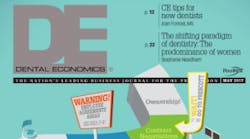Few things may be as uninteresting to talk about as job descriptions. Here at Bent Erickson & Associates, we find most doctors don’t have job descriptions, which means they completely disregard an essential element to employee management. When they do have job descriptions, they’re not done well, which eliminates the value of having them in the first place.
Bottom line: as an employer or manager of people, job descriptions are critical for employee communication and decision-making.
What should job descriptions include?
- Title of the position
- Employment status (exempt or nonexempt)
- A statement of the major purpose of the position
- Minimum eligibility requirements for adequate performance
- A description of the physical demands
- The type and amount of work to be performed
- The individual or position to which the employee reports
- Essential functions of the position
Essential functions
This is a critical component of a comprehensive job description. Per the Equal Employment Opportunity Commission (EEOC), “Essential functions are the basic job duties that an employee must be able to perform, with or without reasonable accommodation. You should carefully examine each job to determine which functions or tasks are essential to performance. (This is particularly important before taking an employment action such as recruiting, advertising, hiring, promoting or firing.)”1
Under all disability laws, the inability of an employee to perform nonessential or marginal functions of a job are generally not an acceptable reason to terminate or not hire or promote an individual with a disability. Therefore, it is important to distinguish clearly between essential and marginal duties on a job description.
Reasonable accommodation decisions
Disability laws impact nearly every employer, whether the employer has 100 or five employees. The purpose of disability laws is to ensure that individuals with disabilities are given the same consideration for employment decisions as individuals without disabilities.
These laws protect individuals from adverse employment actions based on the disability alone. When employers are confronted with an employee who has a mental or physical disability, the employer must consider making reasonable accommodation for that individual to continue employment.
Reasonable accommodation is defined by the EEOC as “any change in the work environment (or in the way things are usually done) to help a person with a disability apply for a job, perform the duties of a job, or enjoy the benefits and privileges of employment.”
An employer must make a reasonable accommodation to the known physical or mental limitations of a qualified applicant or employee, unless the employer can show that the accommodation would cause an undue hardship on the operation of the business. How does one decide (and prove) if accommodation is reasonable or not? This is where the importance (and necessity) of having essential functions incorporated into job descriptions come into play. It begins by obtaining medical information from the employee, who states he or she cannot perform the job duties and needs an accommodation.
Let’s play out this scenario:
- Employee indicates either directly or indirectly that he or she cannot perform a job duty.
- By reviewing the job description, it is determined that it is an essential function.
- Employee must provide information from his or her treating physician about what he or she can and cannot do as it relates to the essential function.
- Employer sends medical certification paperwork to the treating physician, along with an accurate and up-to-date job description.
- Using the job description, the treating physician makes an assessment and gives back the medical certification form, indicating what the employee can and cannot do or what he or she needs to rectify the disability issue. (This could be time off, reduction in work duties, reduction in work hours, and so on.)
- Employer receives this information and begins the process of determining reasonable accommodation or undue hardship.
If an employer goes through this process without providing the job description that contains the essential functions, then the employer would have no documentation to otherwise support or defend any decision or adverse action taken with the employee.
Conclusion
As human resource consultants, we see firsthand the challenges employers face if they do not have well-written job descriptions that are kept up to date. To limit risk and liability, good documentation is the key. Job descriptions represent the most underutilized and most needed document of them all. These are the go-to documents for us and should be for dentists too.
Reference
1 The ADA: Your responsibilities as an employer. The US Equal Employment Opportunity Commission website. https://www1.eeoc.gov//eeoc/publications/ada17.cfm?renderforprint=1. Updated August 1, 2008. Accessed March 28, 2017.
Tim Twigg is the president of Bent Ericksen & Associates and Rebecca Boartfield is a human resources compliance consultant. For more than 30 years, the company has been a leading authority in human resources and personnel issues, helping dentists successfully deal with ever-changing and complex labor laws. To receive a complimentary copy of the company’s quarterly newsletter or to learn more, call (800) 679-2760 or visit bentericksen.com.







